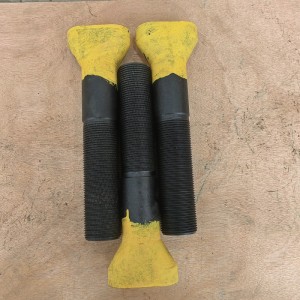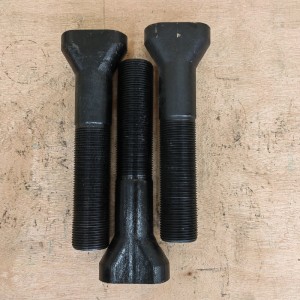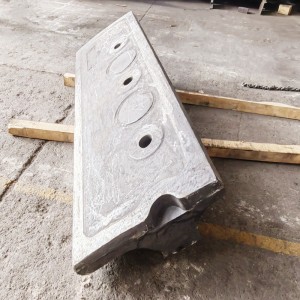As an important mineral processing equipment, the ball mill is widely used in industries such as mining, chemical engineering, and building materials. The daily maintenance of its accessories is crucial for ensuring the stable operation of the equipment and extending its service life. By regularly inspecting the lubrication system, monitoring the wear of transmission components and timely replacing the liners and other measures, equipment failures can be effectively reduced and maintenance costs lowered. This article will provide a detailed introduction to the key points of daily maintenance for ball mill parts, helping users manage their equipment better.
First, inspection of the lubrication system
The lubrication system is a crucial part for the normal operation of the ball mill. Its main function is to reduce the friction between mechanical components, lower wear, and enhance the operational efficiency and service life of the equipment. Regularly inspecting the lubrication system to ensure the sufficiency and cleanliness of the lubricant is an important part of daily maintenance.
1.Inspection and replacement of lubricating oil
Check the oil level and quality of the lubricating oil: Regularly check the oil level of the lubricating oil to ensure it is within the specified range. At the same time, check the color and viscosity of the lubricating oil. If it is found that the lubricating oil has turned black or contains impurities, it should be replaced in time.
Select the appropriate lubricating oil: Based on the working conditions of the ball mill and the manufacturer’s recommendations, choose the suitable lubricating oil. Different types of lubricating oil are suitable for different working temperatures and load conditions. Choosing the appropriate lubricating oil can effectively reduce the wear of mechanical parts.
2. Cleaning and maintenance of the lubrication system
Clean the oil tank and oil pipes: Regularly clean the lubricating oil tank and oil pipes to remove oil stains and impurities and ensure the cleanliness of the lubricating oil. When cleaning, special cleaning agents should be used and strongly corrosive chemicals should be avoided.
Check the sealing performance of the lubrication system: Inspect the sealing components of the lubrication system, such as sealing rings and gaskets, to ensure good sealing and prevent lubricating oil leakage.
Second, wear monitoring of transmission components
The transmission component is one of the core components of the ball mill, and its wear condition directly affects the operational efficiency and stability of the equipment. Regularly monitoring the wear of transmission components and promptly identifying and addressing problems are the keys to extending the service life of equipment.
1.Check the wear of gears and bearings
Gear inspection: Regularly check the wear condition of the gear tooth surface and observe whether there are cracks, spalling or deformations. If the gears are found to be severely worn, they should be replaced in time to avoid equipment shutdown due to gear failure.
Bearing inspection: Check the operating condition of the bearing and observe whether there is any abnormal noise or vibration. Regularly measure the temperature of the bearing to ensure it is within the normal range. If the bearing temperature is found to be too high or there is abnormal noise, the bearing should be inspected and replaced in time.
2. Monitor the operating status of the transmission components
Use vibration monitoring equipment: Install vibration monitoring equipment to monitor the operating status of transmission components in real time. Vibration monitoring equipment can promptly detect abnormal vibrations of transmission components, issue early warnings, and prevent equipment malfunctions.
Record operation data: Regularly record the operation data of transmission components, such as rotational speed, temperature, vibration, etc., and establish equipment operation files. By analyzing the operation data, potential problems of the equipment can be discovered in a timely manner and corresponding maintenance measures can be taken.
Third, regular replacement of the liner
The liner is an important component of the ball mill. Its main function is to protect the mill cylinder from direct impact and wear by the grinding media and materials. The wear condition of the liner directly affects the operating efficiency and service life of the ball mill. Regular replacement of the liner can effectively reduce the wear of the cylinder and improve the operational efficiency of the equipment.
1. Check the wear condition of the liner
Regularly check the thickness of the liner: Use dedicated measuring tools to regularly inspect the thickness of the liner and record the wear conditions. If the liner is found to be severely worn, it should be replaced in time.
Check the fixation of the liner: Inspect whether the bolts of the liner are loose and whether there are any signs of loosening or detachment of the liner. If loose bolts are found, they should be tightened in time. If the liner is found to be loose, it should be replaced in time.
2. Select the appropriate liner material
Select the liner material based on the material characteristics: According to the material characteristics processed by the ball mill, choose the appropriate liner material. For instance, for materials with high hardness, high manganese steel or alloy steel liners can be selected. For materials with strong corrosiveness, stainless steel or composite material liners can be selected.
Consider the wear resistance and impact resistance of the liner: Selecting liner materials with good wear resistance and impact resistance can effectively extend the service life of the liner and reduce the frequency of replacement.
Fourth, other key points for daily maintenance
1.Clean the equipment regularly
Clean the interior of the mill: Regularly clean the accumulated materials and debris inside the ball mill to ensure its cleanliness. When cleaning, special tools should be used to avoid causing damage to the interior of the mill.
Clean the exterior of the equipment: Regularly clean the dust and oil stains on the exterior of the equipment to keep it tidy. When cleaning, a soft cloth and mild detergent should be used, and strongly corrosive chemicals should be avoided.
2. Regularly inspect the electrical system
Check the electrical circuits: Regularly inspect the connection of the electrical circuits to ensure they are firmly connected without any looseness or aging. If the circuit is found to be aged or damaged, it should be replaced in time.
Check the operating status of the motor: Inspect the operating status of the motor and observe whether there is any abnormal noise or vibration. Regularly measure the temperature and current of the motor to ensure they are within the normal range. If the motor temperature is found to be too high or the current is abnormal, it should be inspected and dealt with in time.
3. Regularly carry out equipment maintenance
Develop a maintenance plan: Based on the usage of the equipment and the manufacturer’s recommendations, develop a detailed maintenance plan. The maintenance plan should include regular inspection, cleaning, lubrication and replacement of vulnerable parts, etc.
Record maintenance conditions: After each maintenance, the maintenance content and the problems found should be recorded in detail, and an equipment maintenance file should be established. By analyzing the maintenance records, potential problems of the equipment can be discovered in a timely manner and corresponding maintenance measures can be taken.
Fifth, Summary
The daily maintenance of ball mill parts is the key to ensuring the stable operation of the equipment and extending its service life. By regularly inspecting the lubrication system, monitoring the wear of transmission components and timely replacing the liners and other measures, equipment failures can be effectively reduced and maintenance costs lowered. It is hoped that the introduction in this article can help you better understand the key points of daily maintenance of ball mill parts and provide reference and assistance for your equipment management.
Post time: May-23-2025



